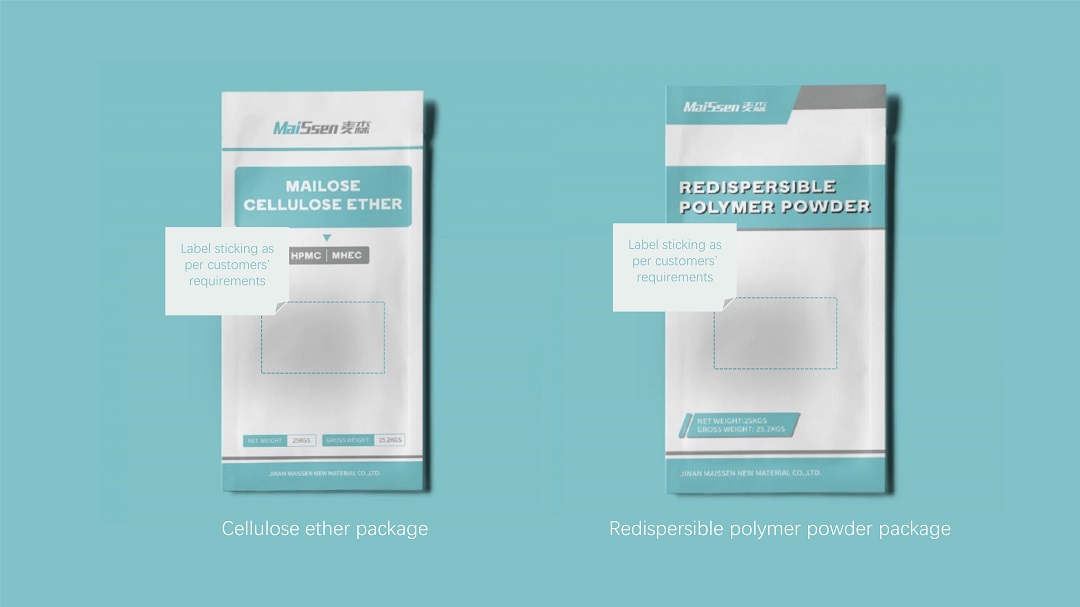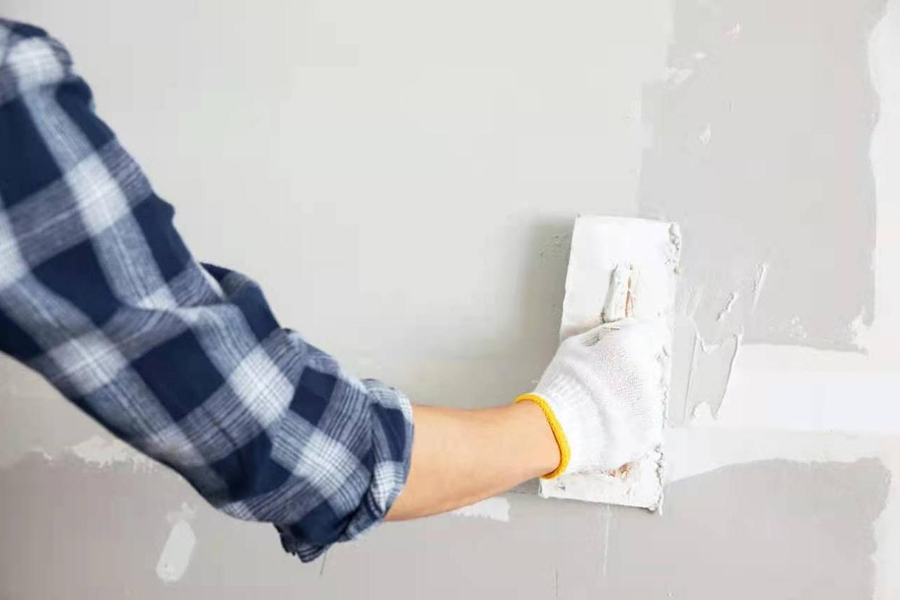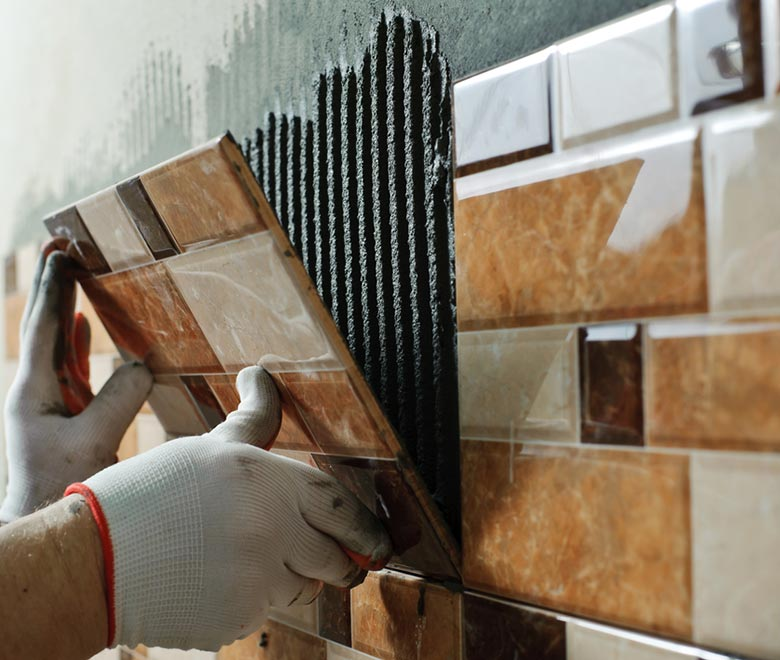Redispersible polymer powder(RDP) and other inorganic adhesives (such as cement, slaked lime, gypsum, clay, etc.) and various aggregates, fillers and other additives (such as hydroxypropyl methyl cellulose, starch ether, cellulose fiber, etc.) After physical mixing, dry-mix mortar is made. When dry powder mortar is mixed in water, under the action of hydrophilic protective colloid and mechanical shear force, the RDP particles can be quickly dispersed into water, and can make the redispersible polymer powder fully form a film. The composition of rubber powder has different effects on the rheological properties and various construction properties of mortar: the affinity of water when the RDP is redispersed, the different viscosity after the RDP is dispersed, the influence on the air content and bubble distribution of mortar, the interaction between rubber powder and other additives, etc., which make different RDP have the functions of increasing fluidity, thixotropy and viscosity respectively Use.
It is generally believed that the function of redispersible polymer powder to improve the workability of freshly mixed mortar is: redispersible powder has an affinity for water during the dispersion process.
After the freshly mixed mortar containing RDP dispersion is formed, as the substrate absorbs moisture, hydration reaction consumes, and volatilizes into the air, the moisture gradually decreases, the resin particles gradually approach, the interface gradually becomes blurred, and the resin gradually merges with each other. Finally polymerized into a film. The process of polymer film formation is divided into three stages. In the first stage, the polymer particles move freely in the form of Brownian motion in the initial emulsion. As the water evaporates, the movement of particles is naturally more and more restricted. The interfacial tension between water and air makes them gradually align together. In the second stage, when the particles start to contact each other, the network-like water evaporates through the capillary tube. The high capillary tension applied to the surface of the particles causes the deformation of the RDP spheres to fuse them together. The remaining water fills the pores and the film is roughly formed. In the third stage, the final stage makes the diffusion of polymer molecules (sometimes called self-adhesiveness) phase into a truly continuous film. During the film formation process, the isolated movable RDP particles are consolidated into a new film phase, which has a higher tensile stress. Obviously, in order for the redispersible polymer powder to re-harden the mortar to form a film, it is necessary to ensure that the minimum film-forming temperature (MFT) is lower than the curing temperature of the mortar.
Colloid-Polyvinyl alcohol must be separated from the polymer membrane system. This is not a problem in alkaline cement mortar systems, because polyvinyl alcohol will be saponified by alkali generated by cement hydration, and the adsorption of quartz materials will gradually separate polyvinyl alcohol from the system without a hydrophilic protective colloid. , The film formed by dispersing the redispersible polymer powder at one time, which is insoluble in water, can function not only in dry conditions, but also in long-term water immersion conditions. Of course, in non-alkaline systems, such as gypsum or systems with only fillers, polyvinyl alcohol is still partly present in the final polymer film, which affects the water resistance of the film. When these systems are not used for long-term water immersion , And the polymer still has its unique mechanical properties, redispersible polymer powder can still be used in these systems.
With the final formation of the polymer film, a system of inorganic and organic binder structure is formed in the solidified mortar, that is, a brittle and hard skeleton composed of hydraulic materials, and redispersible polymer powder forms a film between the gap and the solid surface. Flexible network. The tensile strength and cohesion of the polymer resin film formed by the RDP can be enhanced. Due to the flexibility of the polymer, the deformability is much higher than the rigid structure of the cement stone, the deformability of the mortar is improved, and the effect of dispersing stress is greatly improved, thereby improving the crack resistance of the mortar.
With the increase in the amount of redispersible polymer powder, the entire system develops towards plastics. In the case of high RDP content, the polymer phase in the mortar gradually exceeds the inorganic hydration product phase after curing, the mortar will undergo a qualitative change and become an elastomer, and the cement hydration product will become a "filler" ". The tensile strength, elasticity, flexibility and sealing properties of the mortar modified with redispersible polymer powder are improved. Blending with redispersible polymer powder can form a polymer film (latex film) and form part of the pore wall, thereby sealing the high-porosity structure of the mortar. The latex film has a self-stretching mechanism, which can apply tension to the anchor joint with the mortar. Through these internal forces, the mortar is kept as a whole, thereby improving the cohesive strength of the mortar. The presence of highly flexible and highly elastic polymers improves the flexibility and elasticity of the mortar.
The polymer film in the polymer modified mortar has a very important effect on hardening the mortar. The redispersible polymer powder distributed on the interface plays another key role after being dispersed and formed into a film, which is to increase the adhesion to the material in contact. In the microstructure of the interface area between the powder polymer modified ceramic tile bonding mortar and the ceramic tile, the film formed by the polymer forms a bridge between the vitrified ceramic tile with extremely low water absorption and the cement mortar matrix. The contact area between two different materials is a special high-risk area where shrinkage cracks form and lead to loss of adhesion. Therefore, the ability of latex film to heal shrinkage cracks plays an important role in tile adhesives.

For more information, please contact with us
Email: bruce@mailose.com








